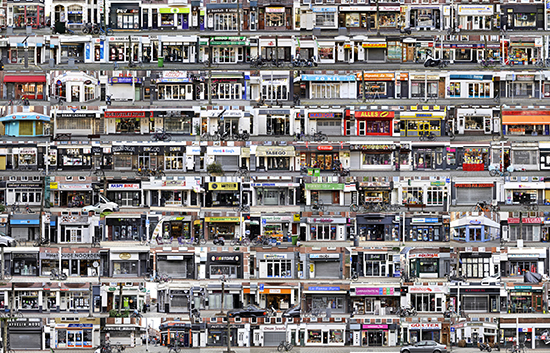Difference between revisions of "Noorderboulevard"
| Line 38: | Line 38: | ||
NOTE VAN IRIS: er is nog een video die ze engels gaan ondertitelen en uploaden. | NOTE VAN IRIS: er is nog een video die ze engels gaan ondertitelen en uploaden. | ||
| + | Plaatsen bij intro over cultural diversity door Jan van Heemst | ||
[[Category:Issue_2]] | [[Category:Issue_2]] | ||
[[Category:Projects]] | [[Category:Projects]] | ||
[[Category:02_Edit_Me]] | [[Category:02_Edit_Me]] | ||
Revision as of 12:51, 11 May 2016
Author: Isabel Valstar
De Noorderboulevard
A visual research into a cultural diverse street.
As a graphic design student I spend a lot of time thinking about the significance of my professional course. What is graphic design today, and what is it al about? Within the professional course I detect a tendency to design according to a specific aesthetic where details of the designs are highly valuated, even more so than practicality. At the same time the concept is told to be crucial within the field. What about the social value within graphic design?
When looking at particular urban shopping street located often located in middle to lower income areas one will find lots of shops representing a whole other side of graphic design. Often the graphic design we find in these streets are labelled by professional graphic designers as ‘ugly’and ‘unprofessional’. However, I wonder if it is correct to label these designs as ‘bad’ graphic design.
I myself do believe that graphic design provides a physical shape where needed. This could be anything, for instance; a cover of a book, a story or maybe the visual language of a specific (sub)culture. This is what, in my opinion, could make graphic design a visual representation of any identity presented to the public.
With my research project I intended to find a deeper and social meaning within graphic design. To achieve so I set up a visual research into the cultural diverse street 'Noorderboulevard' (located in Rotterdam North). During this research I specifically focussed on looking into the social and cultural aspects of said location and how it is visually represented (e.g. shop windows, displays etc). By means of looking at the graphic design of the shops I tried to determine cultural and- or ethnical heritage of the shop owners in question.
After doing some contextual and historical research on the street, I elaborated a more experimental research where I looked into the visual aspects of the shop windows, for instance at the colour use. In order to so I documented the shop windows of the street by use of photography. (see image 1)
A condensed image of the street The ‘Noorderboulevard’ show us a bright projection of a cluttered street using bright colours. (see image 2) Shop owners functioning in the street had placed themselves in a so called ‘low priced’segment of retail, focussing on a group of people from a somewhat lower class of economics. This is reflected in the colour experiments where we see either a lot of grey tones or rather the opposite; bright and catchy colours. Often used by low budget shops (e.g. Kruidvat) where it is all about communicating low prices. (see image 3 and 4)
This is however a bit contradicting to some of the gentrification developments within the area.
Take for example the street just around the corner: ‘Zwaanshals’. A street that consists of renovated properties, trendy design shops and a contemporary coffee bar. Whereas the graphic design also looks different from that of the Noorderboulevard which looks homogeneous, is clean in design and uses coherent colours. One could say the graphic design here looks more professional and indeed I, as a professional graphic designer, can relate much better with the graphic design here than on the Noorderboulevard.
After doing various visual experiments I came to a decision. It was time for me to zoom in, and with that take a look under the surface in order to find out more about social groups that exist within the street. Since the visual research revealed the large amount of Turkish and Moroccan shops, I decided to focus on that segment.
I did this by portraying one particular shop named Dubai. A shop that sells mainly Moroccan products in order to provide the Moroccan people in The Netherlands a piece of their identity. For this research I gained an interview with the owner and photographed the shop inside out (see image 5, 6 and 7).
This research told me a lot about the meaning of graphic design as well as about the social groups the street. Looking back at the project I can see that when it comes to graphic design, it goes so much further than the shop windows. It is the décor around and inside it that completes the image of the shop. To the owners, graphic design seemed of very little importance. In fact, the lack of ‘professional’ design contributes to their image of being a low budget shop, this made me realize that graphic design can be overrated by professionals. Thereby comes the fact that as a professional graphic designer I am very likely to be working for clients coming from a higher class of economics.
I discovered that form sometimes exceeds function, a given that maybe contradicts with contemporary basics of design. I really hope (as well as I wonder), I might be able to provide for people on all social and economical levels by ways of design instead of unwittingly designing by the conventional design aesthetics.
NOTE VAN IRIS: er is nog een video die ze engels gaan ondertitelen en uploaden. Plaatsen bij intro over cultural diversity door Jan van Heemst

